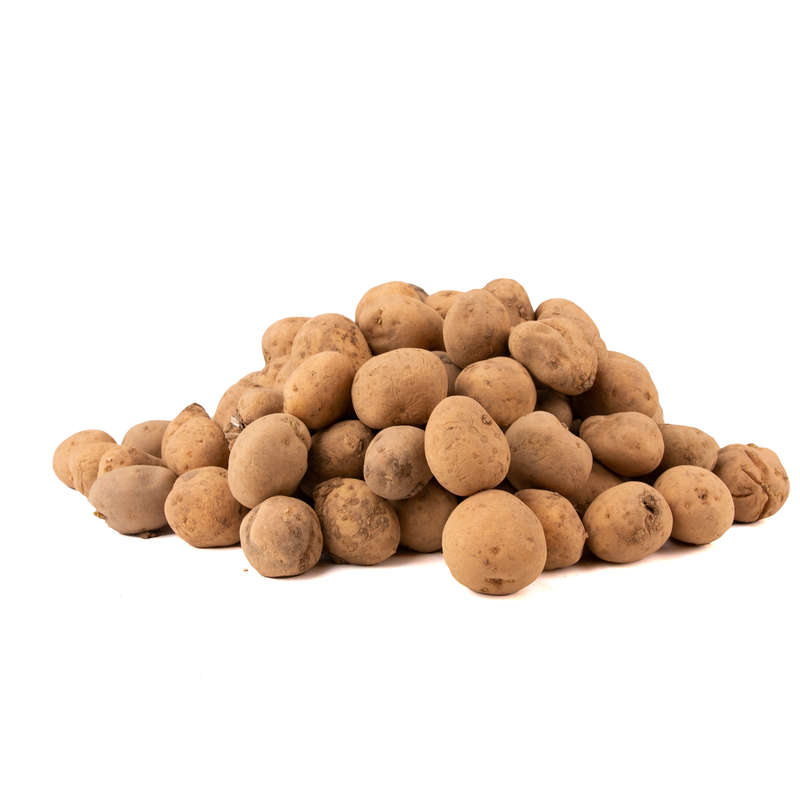
Seed Potatoes - BP1 (7 tubers)
Check my rate
| Main centres: | 1-3 business days |
| Regional areas: | 3-4 business days |
| Remote areas: | 3-5 business days |

| Main centres: | 1-3 business days |
| Regional areas: | 3-4 business days |
| Remote areas: | 3-5 business days |
BP1 is a popular variety of seed potato widely grown for its high yields and disease resistance. Known for its versatility in various cooking methods (baking, boiling, and mashing), BP1 is well-suited to the South African climate and soil conditions, especially in areas with cool winters and moderate summers.
Here's a guide to successfully growing BP1 seed potatoes in South Africa:
Climate:
BP1 potatoes grow well in regions with cool winters and moderate summers, such as parts of the Western Cape, Eastern Cape, and Highveld.
Potatoes generally require a cooler climate for optimal growth. If you're growing them in warmer regions like KwaZulu-Natal, it's best to plant them during the cooler months (autumn to early spring).
Frost can damage the plants, so it's important to plant when the risk of frost is minimal.
Soil Requirements:
Potatoes prefer well-draining, loamy soil that is rich in organic matter.
Soil pH: 5.0—6.0 (slightly acidic to neutral).
It's important to ensure good soil aeration to prevent compaction that could restrict root and tuber development.
Potatoes also benefit from being planted in raised beds or mounds to improve drainage and avoid waterlogged conditions.
Best Planting Time:
The best time to plant BP1 seed potatoes in South Africa is late summer to autumn (February to May), depending on your region.
Planting in autumn ensures that the tubers develop during the cooler months when the temperatures are more conducive to healthy growth.
In warmer areas, you may want to plant during the early spring (September to October) to avoid the hottest summer months.
Seed Potato Preparation:
Chitting is recommended for BP1 seed potatoes to encourage sprouting before planting.
Place the seed potatoes in a cool, dry area with good light for about 2—3 weeks.
Ensure the "eyes" (buds) are facing upwards when chitting. This helps to give the plant a head start once planted.
Planting Depth & Spacing:
Plant the seed potatoes about 10—15 cm deep with 30—40 cm spacing between each seed potato.
Rows should be spaced about 75 cm apart.
If planting in rows, make sure to cover the seed potatoes with a thin layer of soil initially, and gradually build up the soil around the stems as the plants grow (a process known as "hilling").
Watering:
Potatoes need consistent moisture for healthy growth. Water regularly, especially when the plants are flowering and the tubers are forming.
However, avoid overwatering, as this can lead to tuber rot.
Ensure good drainage around the plants and avoid waterlogging. A deep, well-draining soil will help maintain the proper moisture balance.
Fertilizing:
Before planting, incorporate well-rotted compost or organic matter into the soil to enrich it.
Use a balanced fertilizer with equal ratios of nitrogen (N), phosphorus (P), and potassium (K) during the growing season.
A potassium-rich fertilizer is beneficial once the tubers begin to form to encourage good tuber growth and quality.
Mulching:
Apply a layer of mulch around the plants to retain moisture, suppress weeds, and protect the tubers from fluctuating soil temperatures.
As the plants grow, you may also hill the soil around the base of the plants to ensure the tubers are adequately covered.
Common Pests:
Aphids, cutworms, and Colorado potato beetles are common pests.
Aphids can be controlled using insecticidal soap or neem oil.
For cutworms, use collars around the plant stems, or apply diatomaceous earth to the base of plants.
Colorado potato beetles can be removed by hand or treated with organic pest control solutions.
Common Diseases:
Potato blight (late blight) is a significant concern in South Africa, particularly during humid, wet weather.
Prevent blight by using blight-resistant varieties, keeping plants spaced for good air circulation, and applying fungicides if necessary.
Ensure plants are not watered overhead to prevent fungal issues.
Early blight and powdery mildew can also affect potatoes, but maintaining good plant spacing and crop rotation can help mitigate risks.
Harvest Time:
BP1 potatoes typically take around 90 to 120 days to reach maturity, depending on weather conditions.
Harvest the potatoes when the plants begin to yellow and die back (usually in late spring t...